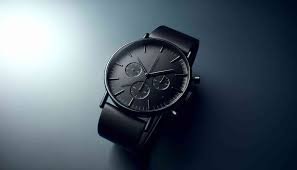The Art of Watch Creation: Exploring OEM and ODM Manufacturing Processes
Watches have long been cherished as both functional timekeeping devices and exquisite fashion accessories. Behind every stunning timepiece lies a complex process of creation, involving meticulous craftsmanship and precise engineering. In the world of watchmaking, two key manufacturing processes stand out: Original Equipment Manufacturing (OEM) and Original Design Manufacturing (ODM). In this article, we delve into the art of watch creation and explore these two distinct approaches to crafting timepieces.
Understanding OEM Manufacturing
OEM Defined
Original Equipment Manufacturing (OEM) is a well-established production process in the watchmaking industry. In an OEM arrangement, a watch brand or company collaborates with a specialized manufacturer to produce watches according to the brand’s specifications. These specifications encompass design, materials, oem watch quality standards, among others.
The Collaborative Process
OEM manufacturing involves a close partnership between the watch brand and the manufacturer. The brand typically provides detailed design blueprints, specific components, and quality requirements to the manufacturer. The manufacturer, in turn, uses its expertise and resources to produce the watches according to these specifications.
Customization and Brand Identity
One of the primary advantages of OEM manufacturing is the high degree of customization it allows. Watch brands can create unique timepieces that reflect their identity and vision. They have control over design elements, such as case shapes, dials, hands, and even movement modifications. This level of customization is essential for brands that aim to differentiate themselves in a competitive market.
Quality Control and Consistency
OEM manufacturers are often chosen based on their reputation for quality and craftsmanship. This ensures that the watches produced meet the brand’s exacting standards. Brands can maintain a consistent level of quality across their product lines, fostering trust and reliability among their customers.
Exploring ODM Manufacturing
ODM in a Nutshell
Original Design Manufacturing (ODM) takes a different approach to watch production. In this model, a manufacturer independently designs and produces watches, which are then offered to various watch brands for branding and distribution. Unlike OEM, where the brand has a direct hand in design and specifications, ODM watches are pre-designed by the manufacturer.
Streamlined Production
ODM manufacturing is often associated with cost-efficiency and speed. Since the manufacturer creates the designs and specifications, production can begin almost immediately after a brand selects a model. This can be advantageous for brands looking to enter the market quickly with a ready-made product.
Branding and Identity
While ODM watches come with pre-designed aesthetics, brands can still add their unique touch by branding the watches with their logos and packaging. This allows brands to establish their identity without the need for extensive design work. However, it’s important to note that the level of customization available in ODM is more limited compared to OEM.
Market Flexibility
ODM manufacturing provides watch brands with the flexibility to explore various styles and designs without the upfront costs and risks associated with developing their own unique models. This flexibility can be particularly appealing for emerging brands or those looking to expand their product range rapidly.
Choosing Between OEM and ODM
The decision to opt for OEM or ODM manufacturing depends on various factors, including brand identity, resources, market strategy, and target audience. Some watch brands prefer the creative control and uniqueness offered by OEM manufacturing, while others value the efficiency and cost-effectiveness of ODM.
In conclusion, the art of watch creation involves a delicate balance between creativity, craftsmanship, and practicality. OEM and ODM manufacturing processes offer watch brands distinct paths to bring their timepieces to life, each with its own set of advantages and considerations. Regardless of the chosen approach, the ultimate goal remains the same: to craft beautiful, functional, and enduring watches that captivate the hearts of enthusiasts worldwide.










